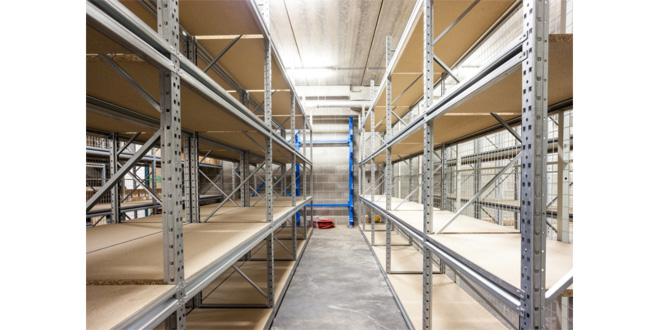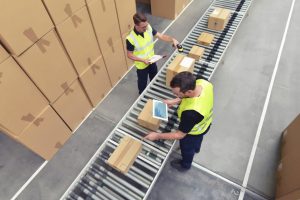
If you are part of an industry that requires work to be completed in warehouses, such as manufacturing, wholesale, and customs, for example, you will be aware of the current labour and staffing crisis.
This has been brought on by several factors and is being received by industry professionals in various ways. Some see it as an opportunity for new technologies to flourish, others are not so keen and are being impacted negatively by the lack of staff and the necessary increases to current staff wages.
In this article, we’re going to be exploring why the labour and staffing crisis in warehouses occurred, what impact this has had on the industry and how barcoding technologies can assist in solving it.
There has been a multitude of factors that has led to the current warehouse staff crisis. Let’s investigate a couple of them:
• Coronavirus Pandemic. One of the main causes of the labour crisis in warehouses is the pandemic, which we are still feeling the effects of over 18 months later. When furlough was put into place to help tackle the ongoing issues of the pandemic, we, of course, saw a huge decline in manual labour in all industries. This put a halt on deliveries, left shelves empty, and many warehouses across the country were forced to close. It is unclear whether the end of furlough will lead to the return of workers to warehouses, or if employers will continue to struggle with low staff.
• Brexit. Due to post-Brexit’s immigration laws, many EU workers are now unable to travel to complete work in the country. This has had a serious impact on the labour and staffing crisis and there is now a worry that the positions filled by workers from oversees are unable to be filled.
• Increased Hiring. As a result of these two factors and the labour crisis, there has been an additional knock-on effect. Warehouses are advertising the same or similar roles with various benefits, perks, and pay, meaning potential employees have more options than ever before. People interested in working in warehouses can be picky, as there are so many jobs available, making the competition for workers even higher.

There have been major effects on the industry due to the labour and staffing crisis such as stock going out of date due to it being unable to be shipped, leading to serious financial losses for companies. Additionally, current employees are being overworked, which had led to illness, stress, and fatigue, and those workers having to take time off. These issues have had a ripple effect into the outside world.
• Delivery delays. A reduced number of staff means that the warehouse processes slow down. This delays warehouse jobs, which leads to a delay in dispatches and deliveries.
• Empty shelves. Because of the delivery delays, there is no stock arriving at stores, no medicines being delivered to pharmacies and hospitals and, most recently, there’s a shortage in drivers and fuel as well.
• Panic Buying. Finally, this leads to panic buying. When a shortage is discussed in the media, more people become aware of the issue, resulting in more panic buying. This puts a further strain on the industry and it takes a longer amount of time for the market to catch up on it.
As mentioned, some industry professionals believe that warehouse managers should be utilising this difficult time to implement new technologies that could potentially replace workers or, at least, reduce the pressure on current warehouse workers.
At this point, you may have a few questions. Can technology really improve these trying times? How quickly can they be implemented into your warehouse? Are they easy to pick up for those who aren’t tech-savvy? Let’s look at some of the benefits of choosing warehouse technology from GSM Barcoding and see if they help answer any of your queries.
• Efficiency. The main reason for implementing technology such as barcoding systems for warehouses, is that they speed up productivity and make for a more efficient working day. Industry professionals claim that they have increased productivity by up to 30%.
• Easy staff training. Using one of our simple barcoding systems means that less time will be spent training staff. They are easy to use, and the technologies can be picked up quickly, no matter your previous experience with tech.
• Stock-control systems. Don’t waste time manually keeping track of stock. Minimise the risk of human error and speed up the process by taking advantage of the stock-control systems such as a Sage Barcode Warehouse Management System.

There are concerns that the labour and staffing crisis will take years to recover from, and the industry will be permanently changed due to the amendments having to take place to keep businesses running day-to-day. This could mean that these new technologies stay in place and evolve over time to become the future of warehouse practices. But what are these new technologies?
• Wearables. We’ve all heard of smart watches, but what about durable wearable technology with user-friendly interfaces and graphical applications that can be used to track stock, reduce labour costs, and eliminate human error? These small computers can be worn on a worker’s body or as a piece of clothing and are a great, convenient way to implement technology into your warehouse.
• Robotics. As futuristic as this sounds, robotic technology isn’t uncommon in modern day warehouses and the current crisis has only increased the use of such technologies. Zebra technologies have recently implemented Fetch Robots, which bring stock items directly to the pickers and packets - reducing time travel time and creating a more efficient process.
We hope that this article has been informative, and you are now considering the use of barcoding technologies in your warehouse.
GSM Barcoding is part of the GSM Group – the largest label and nameplate company in Europe that has been trading since 1974. We provide the industry with complete labels, printing, and barcoding solutions, specialising in wireless networking and mobility technologies.
To find out more, please visit our website where you will find information about our incredible barcoding systems for warehouses, including those from Zebra technologies.